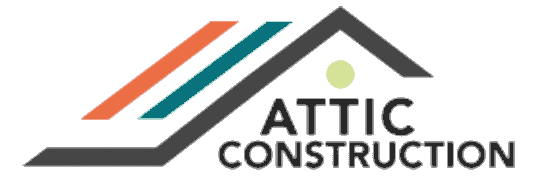Insulation is one of the most important aspects of maintaining an energy-efficient and comfortable home. Whether you’re in the process of building a new house, renovating an older one or you just want to improve your home’s energy performance, choosing the right insulation material makes all the difference. With so many options available, it’s essential to understand the characteristics, advantages, and applications of each type, so you can make an informed decision.
Fiberglass Insulation
As one of the most widely used and recognized types of insulation material, fiberglass insulation is composed of fine glass fibers and comes in a variety of forms such as batts, rolls, and loose-fill (blown-in).
Advantages of Fiberglass Insulation
- Affordability: Fiberglass is generally one of the least expensive insulation options.
- Availability: Fiberglass is available in pre-cut lengths and is widely available.
- Easy Installation: Batts and rolls are easy to install and are ideal for attic spaces.
- Fire Resistance: Fiberglass is non-combustible and does not support mold growth.
- R-Value: It offers an R-value (a measure of thermal resistance) between 2.2 and 4.3 per inch, depending on the density.
Applications
Fiberglass insulation is ideal for attics, walls, and floors, especially in areas where cost-effectiveness and ease of installation are priorities. It is often considered the best insulation material for most projects.
Cellulose Insulation
Cellulose insulation is mainly made of recycled paper products such as newspapers, and is treated with fire-retardant chemicals. It is commonly available in loose-fill form.
Advantages of Cellulose Insulation
- Excellent Coverage: Loose-fill cellulose can fill gaps and crevices effectively, providing consistent thermal protection.
- High R-Value: It has an R-value of approximately 3.2 to 3.8 per inch.
Applications
Cellulose is generally used in attics and while retrofitting existing walls, because it can easily conform to irregular spaces.
Foam Board Insulation
Foam board insulation, also known as rigid board insulation, is made from materials like polystyrene, polyisocyanurate, or polyurethane. It comes in rigid panels of varying thicknesses.
Advantages of Foam Board Insulation
- High R-Value: Foam board offers an R-value ranging from 4 to 6.5 per inch, which makes it very effective at reducing heat transfer.
- Moisture Resistance: It is resistant to water, so it’s very good in damp environments.
- Durability: Foam boards are long-lasting and resistant to decay and pests.
- Air Barrier: When installed properly, foam boards can act as both an air and vapor barrier.
Applications
Foam board insulation is often used in basement walls, exterior walls, and under concrete slabs. It tends to be highly effective in areas that require a high level of moisture resistance.
Spray Foam Insulation
Spray foam insulation is applied as a liquid, which then expands into solid foam, providing an airtight seal. It is available in open-cell and closed-cell varieties, the latter being more dense and rigid.
Advantages of Spray Foam Insulation
- Superior Insulation: Closed-cell spray foam has an R-value of approximately 6.5 per inch, making it one of the most effective insulators.
- Air and Moisture Barrier: It seals gaps and cracks, preventing air leakage and moisture infiltration.
- Longevity: Spray foam is durable and does not settle over time.
Applications
Spray foam is great for sealing gaps, insulating irregularly shaped areas, and providing excellent thermal resistance in walls, attics, and crawl spaces.
Reflective Foil Insulation
Reflective foil insulation consists of a layer of aluminum foil backed by materials like Kraft paper, plastic film, or cardboard. It’s primarily used to reflect radiant heat.
Advantages of Reflective Foil Insulation
- Reflects Heat: Especially effective in hot climates, it reflects up to 97% of radiant heat.
- Moisture Barrier: It can double as a vapor barrier in certain applications.
- Lightweight and Easy to Install: Reflective foil is simple to handle and install.
Applications
Reflective foil insulation is best for attics, walls, and roofs in hot climates, where its heat-reflecting properties are most beneficial.
Mineral Wool Insulation
Mineral wool, also known as rock wool or slag wool, is made from natural minerals or industrial byproducts. It is available in batts and loose-fill forms.
Advantages of Mineral Wool Insulation
- Fire Resistance: Mineral wool is non-combustible and can withstand extremely high temperatures.
- Moisture Resistance: It resists water and does not promote mold growth.
- High R-Value: Mineral wool has an R-value of about 3.7 to 4.2 per inch.
Applications
Mineral wool is commonly used in walls, ceilings, and floors where fire resistance and soundproofing are priorities.
Elements to Consider When Choosing Insulation
- R-Value Needs: Work with your insulation professionals to determine the required R-value for your home. This will be based on local building codes, climate, and the area being insulated.
- Climate: Climate is an important element to consider when making insulation materials comparison. Effectiveness of particular insulation materials depends on the climate. For example, reflective foils work well in hot climates, while fiberglass and foam boards are versatile across a wide range of temperatures.
- Budget: While initial costs vary, consider the long-term energy savings each material can provide. The experts at Attic Construction can help you determine what works best for you.
- Moisture Control: In damp areas, materials like foam board or spray foam may be preferable.
By selecting the right attic insulation material for your home, you ensure that you are creating a comfortable living environment, and one that is energy-efficient. Understanding your own specific needs, your budget, and the characteristics of each insulation type, you can make an informed decision that will translate into long-term peace of mind, comfort, and energy savings.
Are you ready to improve the energy efficiency of your home and make it more comfortable? For well over a decade, Attic Construction has been helping customers elevate their insulation to optimal levels. Experience our exceptional customer service and professionalism firsthand; call us today for a free inspection!

